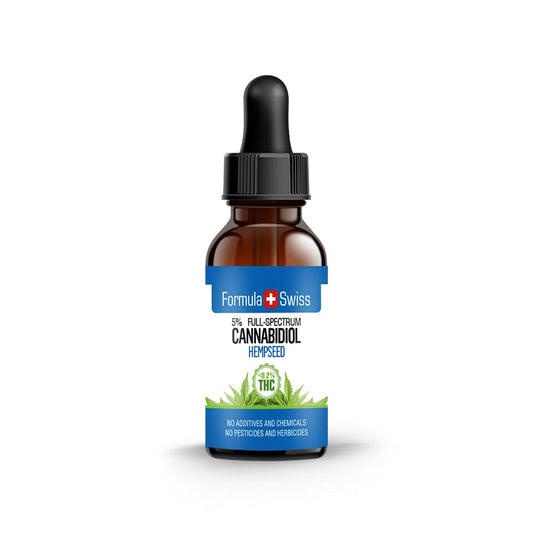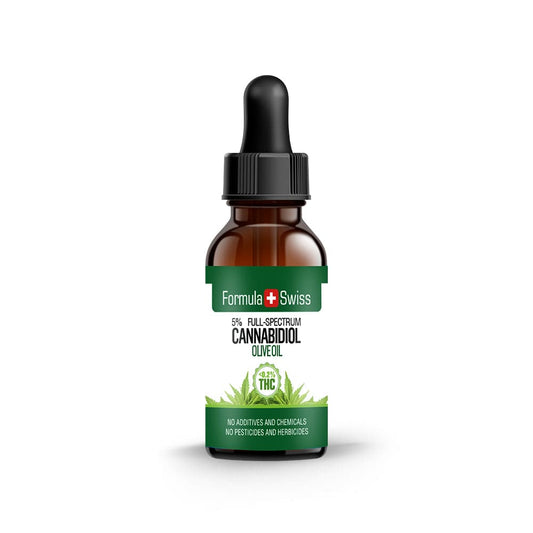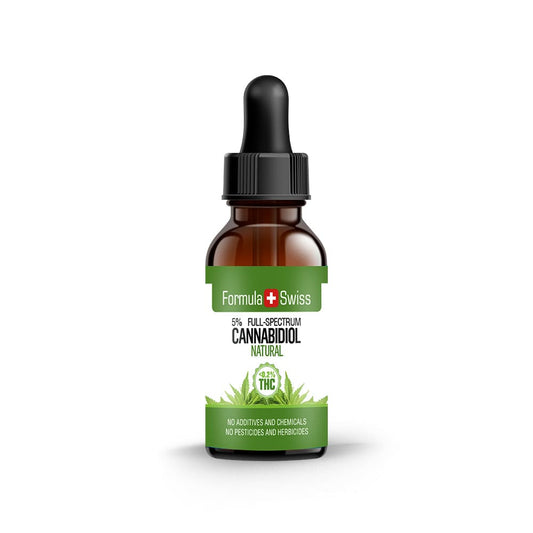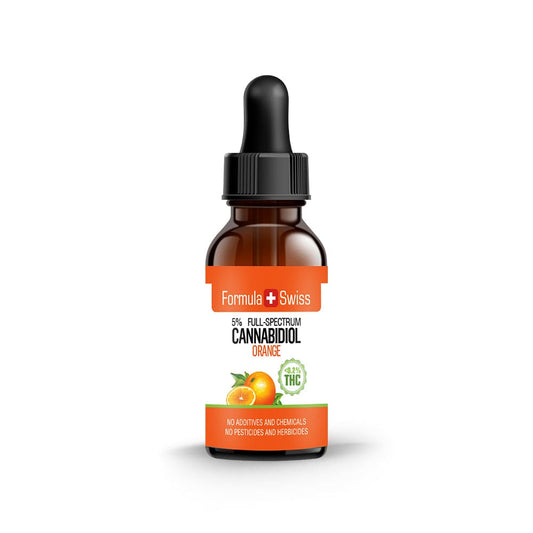Terpenes in the cannabis plant are truly fascinating, giving each strain its unique scent. Among them, pinene stands out with its crisp aroma and its broader role within the plant and beyond.
After spending over a decade studying CBD and hemp, I've come to appreciate just how complex the cannabis plant really is, and pinene plays a crucial part in that complexity, adding depth and identity to different varieties.
In my work, I've encountered pinene in many forms. It’s not merely about aroma; pinene is a defining characteristic that influences the entire profile of a strain.
This article explores pinene in depth — from its natural sources to its importance in cannabis and its unexpected presence in everyday products.
Prefer watching over reading? This video covers the key points from the article:
Save up to 30% when you order your CBD oil today
Key Takeaways
- Pinene is a terpene known for its distinct pine-like aroma.
- It exists in two forms: alpha-pinene and beta-pinene.
- Pinene is found in cannabis, pine trees, rosemary, and basil.
- This terpene contributes to the scent and flavor of cannabis strains.
- Pinene is widely used in fragrances, cleaning products, and as a flavoring agent.
This article is provided for informational purposes only and does not relate to any of the products available in our webshop. For more information, please see our full disclaimer.
Explanation of Terpenes in Cannabis
Terpenes are naturally present in a wide variety of plants, including fruits, vegetables, herbs, and spices. They’re what give these plants their distinctive aromas and contribute to their overall character.
When it comes to cannabis, researchers have identified over 100 different terpenes so far. Each one has its own chemical makeup, which helps shape the scent and flavor of a particular variety. The overall experience of a cannabis strain is influenced not only by cannabinoids, but also by the unique blend of terpenes it contains.
Importance of Pinene as a Terpene in Cannabis
Pinene is one of the most prominent terpenes found in cannabis. It’s known for its distinctive pine-like scent, which can be more or less intense depending on how much of it is present in a particular variety.

According to a 2021 study published in the journal Biomolecules, pinene may interact with other plant compounds in various ways, possibly by influencing how they move across cell membranes. While research is still ongoing, it's clear that pinene plays a significant role in shaping the aromatic and functional profile of cannabis.
Overall, pinene stands out for its unique aroma and the way it contributes to the overall character of different cannabis strains.
Order and enjoy up to 30% off your CBD oil purchase
What is Pinene?
Have you ever walked through a forest and noticed the refreshing aroma of pine trees? That scent is due to the presence of a terpene called Pinene.
Terpenes are organic compounds found in plants that give them their unique aroma and flavour. Pinene, also known as α-pinene, is one of the most common terpenes found in nature, and it is what gives pine trees their distinct aroma.
Pinene has a molecular formula of C10H16 and exists in two forms: alpha-pinene and beta-pinene. Alpha-pinene has a sweet woody scent, while beta-pinene has a more herbal aroma.
Definition and Chemical Structure of Pinene
Pinene belongs to the class of compounds known as monoterpenes because it contains two isoprene units within its structure. Its chemical structure consists of 10 carbon atoms arranged in rings with double bonds between them. The molecule also contains hydrogen atoms at various positions around the rings.

The chemical properties of pinenes make them highly reactive towards oxygen molecules present in air, causing rapid oxidation. This reaction often results in the formation of harmful pollutants.
Sources of Pinene in Nature
Pinenes are widely found in nature and can also be produced through other processes:
Natural Sources:
- Coniferous Trees: Pine, fir, spruce, cypress, and juniper.
- Herbs: Rosemary, basil, dill, parsley, and sage.
Other Production Methods:
- Chemical Synthesis: Pinenes can be created through industrial processes.
- Microbial Activity: They can also form when microbes act on plant material during fermentation or decay.
Pinene in Cannabis
Cannabis is a complex plant that contains hundreds of compounds, including cannabinoids, terpenes, and flavonoids. Terpenes are particularly interesting because they not only contribute to the aroma of cannabis. One of the most important terpenes found in cannabis is Pinene.
Presence and Concentration of Pinene Across a Variety of Cannabis
The presence and concentration of Pinene vary from one strain of cannabis to another. Generally speaking, Sativa strains have higher concentrations of Pinene compared to Indica strains. However, this is not always the case as genetics play a role in determining the chemical composition of each strain.

In terms of concentration, some strains can contain as little as 0.1% Pinene while others can contain up to 2%. It's worth noting that the relative proportion of Pinene compared to other terpenes also affects its aroma and flavor profile.
Effects of Pinene on the Aroma Profile of Cannabis
Pinene has a unique aroma that is often described as piney or woody. This distinct scent can be detected even when present in low concentrations within a strain's chemical composition.
In addition to its piney aroma, it also imparts a fresh scent, which helps mask the strong odor associated with certain strains. When it comes to flavor, pinenes provide a refreshing taste similar to mint or eucalyptus, which can be quite pleasant when using cannabis products containing high levels of pinene.
Order CBD oil now and save as much as 30%
Types of Pinene
Pinene is a terpene found across a variety of cannabis strains, as well as numerous other plants, including pine trees, rosemary, and basil. There are two types of pinene: alpha-pinene and beta-pinene. These two types have similar chemical structures but differ in how the atoms are arranged, resulting in distinct properties that affect their aroma.

Differences Between Alpha-pinene vs Beta-pinene
Alpha-pinene is the most commonly found type of pinene. It carries a strong, fresh aroma that resembles pine needles or fir trees. This terpene is primarily known for its distinct scent.
Beta-pinene, on the other hand, has a sweet, woody aroma reminiscent of rosemary or basil. While less common than alpha-pinene, it offers its unique aromatic qualities.
Both alpha- and beta-pinene are present in various cannabis strains, with concentration levels influenced by genetics and growing conditions. Their aromatic profiles contribute to the overall sensory experience of these strains.

The main difference between alpha- and beta-pinene lies in their molecular structure. Alpha-pinene has a single bond between carbon atoms 2 and 3, whereas beta-pinene contains a double bond at this position (C2-C3).
This structural difference influences how these terpenes interact within the body. Another distinction involves sensory perception; humans tend to detect alpha-pinene’s aroma more easily, while beta-pinene often requires higher concentrations for detection.
Additionally, alpha-pinene is frequently found in Sativa-dominant strains, whereas beta-pinene appears in hybrid or Indica-dominant strains. However, these patterns are not consistent across all plants, as the genetic makeup of each strain can lead to variation.
Industrial Uses of Pinene
Pinene is not only useful for medicinal purposes but also has various industrial applications. One of the most common industrial uses of pinene is as a solvent for cleaning products due to its excellent solvency power. It is also used as a flavoring agent in food products.
Furthermore, pinene's aromatic properties make it suitable for use as an ingredient in perfumes and fragrances. Its ability to dissolve oils makes it an ideal candidate for use in manufacturing paints, varnishes, and adhesives.
Personal Perspective
To wrap up, pinene is a key player in the unique smell of many cannabis strains. As I wrote this, I realized how much this terpene impacts our experience of cannabis. It gives that fresh, pine-like scent we all know.
Pinene is found in many plants, from trees to herbs like rosemary. This shows how important it is to the plant world's scent.
Looking into alpha-pinene and beta-pinene, I saw their differences. Alpha-pinene has a sharp, refreshing scent. Beta-pinene has a deeper, woodier note. This variety is great for those exploring different cannabis strains.
But pinene's uses go beyond cannabis. It's used in fragrances, cleaners, and even food. Its wide range of uses shows its value in our daily lives. This article has made me appreciate pinene even more.
Don’t miss out—save up to 30% when you purchase CBD oil today
Frequently Asked Questions
What is pinene?
Pinene is one of the most well-researched terpenes and one of the primary active compounds in cannabis. There are two types of pinene structures, alpha and beta. Alpha-pinene is one of the most abundant terpenes found in nature and is part of the monoterpene family.
What are the sources of pinene in nature?
Pinene is found in various fresh herbs such as rosemary, basil, dill, cedar, eucalyptus, parsley, and some citrus varietals like lime and lemon peel. It is also present in turpentine, which has been used as a medicine, detergent, and paint solvent for thousands of years.
What are the two types of pinene?
There are two types of pinene: alpha-pinene and beta-pinene. These compounds are known for their distinct aromatic profiles and structural differences. They contribute to the characteristic scents found in various plants, including coniferous trees and herbs, and play a role in the overall sensory experience associated with certain botanical sources.
What are some cannabis strains high in pinene?
Some cannabis strains high in pinene include Blue Dream, Dutch Treat, Haze Berry, OG Kush, Strawberry Cough, Bubba Kush, Chemdawg 91, and Island Sweet Skunk.
What is the difference between alpha-pinene and beta-pinene?
Alpha-pinene and beta-pinene are two forms of the same terpene with subtle differences. Alpha-pinene is more common, water-soluble, and has a sharper pine scent, while beta-pinene is less common, not water-soluble, and carries a more herbal or woody aroma. Both contribute to the rich and distinctive fragrance of many plants.
How does pinene interact with other cannabis compounds?
Pinene interacts with other compounds in cannabis as part of the entourage effect, contributing to the overall sensory experience and influencing the nature of the effects.







